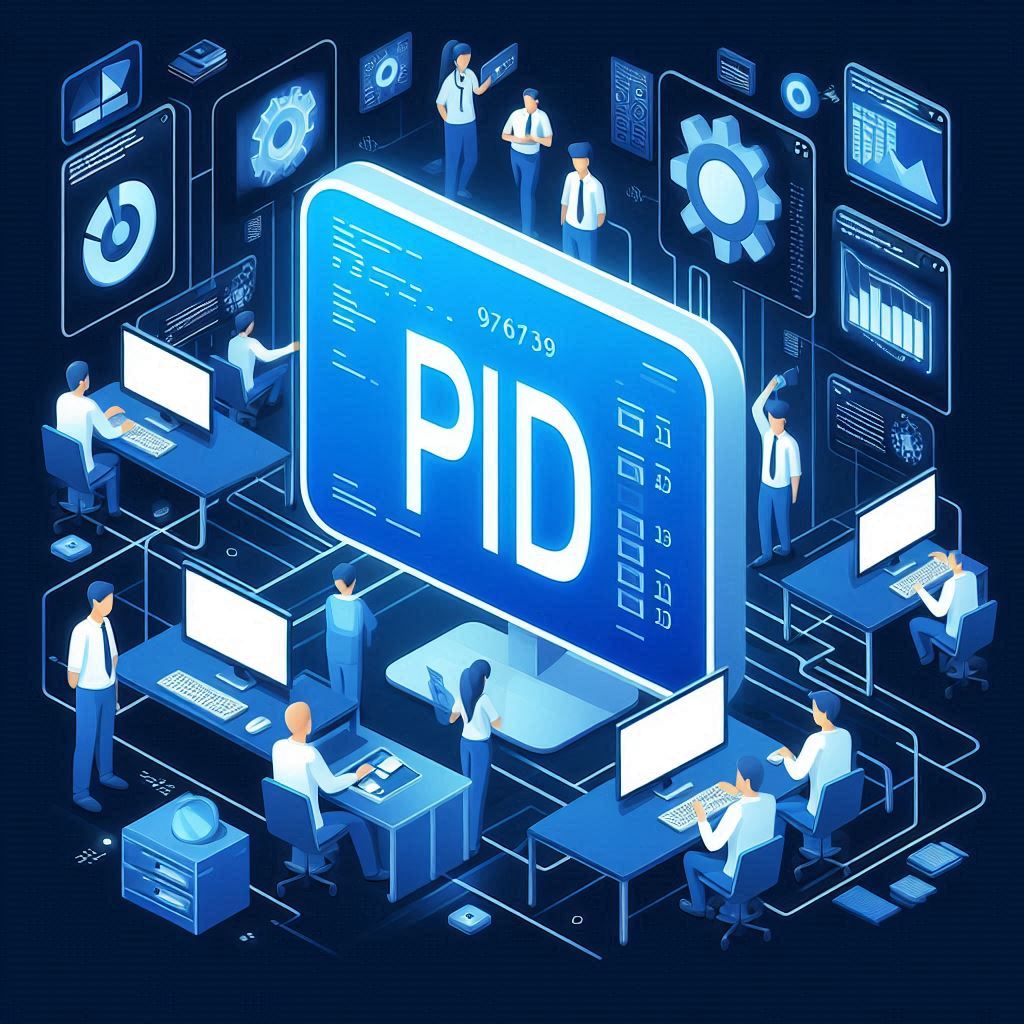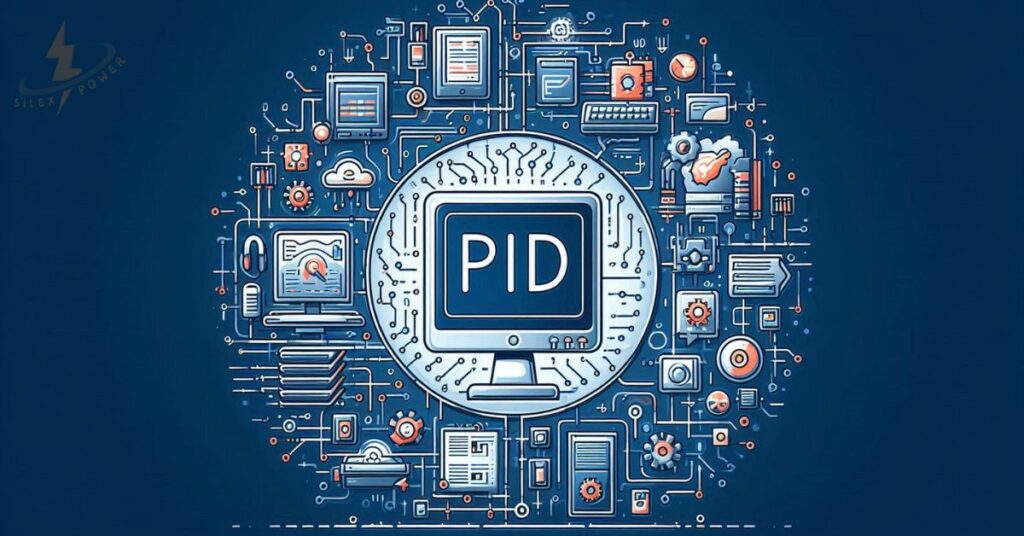The Concept of Process Identifiers (PIDs) in Simple Terms
It’s easy to imagine computers becoming confused in a world where they continuously execute innumerable tasks. This is prevented by assigning a unique number known as a Process Identifier (PID) to every ongoing process, be it a program or service. This figure can be thought of as a name tag that helps your computer manage all the concurrent activity.
To assist the operating system in organizing and managing the software, your computer automatically assigns it a PID when it launches. Everything would be sluggish and disorganized if PIDs weren’t in place to let your computer distinguish and control the innumerable background processes. PID:22048101
Here’s how PIDs work in simple terms:
Windows OS randomly assigns PIDs to processes.
Linux/macOS: Assigns PIDs in a sequence, with the first process being PID 1.
Maintaining the functionality of your computer and resolving issues require an understanding of how these figures operate.
Why Should You Care About PIDs? Unlocking Key Benefits for Your System
Although PIDs may appear to be a minor component of your computer, they are actually crucial to the smooth operation of your system. Let’s examine the benefits of PIDs and how they simplify your technological life:
Boost Performance: By monitoring PIDs, you can quickly identify and manage resource-heavy processes, which helps prevent lag and slowdowns.
Manage System Resources: PIDs help the system allocate resources like CPU, memory, and storage efficiently to each task, preventing any program from hogging resources and causing crashes.
Troubleshoot Quickly: If your computer freezes, slows down, or experiences errors, knowing how to identify the PID associated with a problematic process helps you find the root cause faster.
Essentially, PIDs give you the ability to track, tweak, and manage the health of your computer by giving you the means to identify issues and enhance performance.
Exploring PID: 22048101 What Could It Be?
Demystifying PID: 22048101 What’s Behind the Number?
PID: 22048101 is just one of many numbers assigned to a running process on your system, but what exactly does it represent? It could refer to any of the following:
System Processes: These are core tasks your computer needs to run smoothly, like managing updates, networking, or system resource allocation.
User Applications: These are tasks associated with the programs you open, like a web browser, word processor, or music player. For example, if you’re using Google Chrome or Spotify, each one gets its own unique PID.
Background Tasks: Not all processes are visible. Some are background tasks that run without user interaction. These could be antivirus scans, backups, or system checks. Though hidden, these tasks are essential for maintaining your computer’s overall health.
You’ll need to do some research to find out exactly what PID: 22048101 means, but don’t worry—it’s simple!
How to Find Out What PID: 22048101 Is Linked To—A Simple Guide
It’s simple to find out what PID: 22048101 is doing on your computer, so don’t worry. The following steps will help you solve the puzzle across many operating systems:
On Windows:
Windows makes it simple to find out what’s running with any PID. Here’s how you can check:
Open Task Manager by pressing Ctrl + Shift + Esc.
Go to the Details tab, where you’ll see a list of running processes.
Find PID: 22048101 and check the name of the process.
Alternatively, use this simple Command Prompt command:
bash
CopyEdit
tasklist/FI “PID eq 22048101”
This will show you the exact program or service connected to that PID.
On Linux/macOS:
On Linux and macOS, you can easily check the PID linked to a process by using the terminal.
Open Terminal.
Run this command:
bash
CopyEdit
ps -p 22048101 -o comm=
This will show you the name of the program using that PID.
To gather even more details, try this:
bash
CopyEdit
ps aux | grep 22048101
A summary of memory consumption and the person who initiated the process will be provided by this.
Managing PID: 22048101: How to Take Action
When and How to Take Action on PID: 22048101
If PID: 22048101 is linked to a program that’s acting up, slowing down your system, or using too many resources, you can manage it directly. Here’s how you can take action:
End the process (if it’s problematic):
Windows: Run this command in Command Prompt to terminate the process:
bash
CopyEdit
taskkill/PID 22048101
Linux/macOS: Open Terminal and type:
bash
CopyEdit
kill 22048101
This will force the process to stop, freeing up resources and potentially fixing the issue.
Restart the Process: If the process is something essential, like a core system task or program, you can restart it by simply closing the program and reopening it.
Investigate Further: If you’re unsure whether PID: 22048101 is a legitimate process, it’s best to investigate. Some malicious software might disguise itself with random PID numbers. Search online for information about the process to ensure it’s safe.
The Power of Knowing Your PIDs Be Your Own Tech Expert
Maximizing Your System’s Performance and Stability
You may improve your computer’s performance and troubleshoot it more efficiently by comprehending and controlling PIDs. This information will help you in the following ways:
Boost Performance: Spot and stop resource-hogging programs using PIDs to improve your system’s speed.
Prevent Future Problems: Regular monitoring of PIDs can help you detect potential issues before they become serious, keeping your computer stable and running smoothly.
Become a Tech Pro: Understanding PIDs takes you beyond being just a user. It gives you the tools to troubleshoot and optimize your system like a pro.
Now that you have the ability to make knowledgeable decisions that improve the functionality and health of your computer, you are more than simply another user.
Key Takeaways:
PIDs help computers organize and manage different tasks.
PID: 22048101 is just one number assigned to a process that could represent anything from a system task to a user program.
Using straightforward commands, you may quickly locate and control the processes connected to any PID.
Using PIDs effectively allows you to take charge of your system’s performance, fix issues more quickly, and optimize your machine.
Final Thoughts: Take Control of Your System with PIDs
Having a solid understanding of PIDs, like PID 22048101, can help you keep your machine in good condition, increase speed, and find solutions to issues fast. You can take charge when something goes wrong in addition to monitoring the programs that are operating on your computer. PIDs are the number one tool for managing everything, from resolving stopped applications to optimizing resource usage.

Recall that mastering PIDs will set you on the path to becoming an expert in technology. Therefore, don’t panic the next time your computer misbehaves; instead, utilize your newly acquired understanding of PIDs to troubleshoot and restore system functionality!



